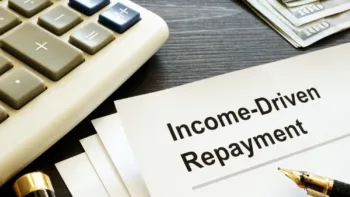
If you’re using—or hoping to switch to—an income-driven repayment (IDR) plan to keep your student loan payments manageable, you’re not alone in feeling confused. Over the last few weeks, borrowers have faced a wave of uncertainty as the Department of Education quietly removed key online applications for IDR and loan consolidation.
These changes came with little notice and no official explanation at first, leaving many to wonder: Can I still apply? Will I lose progress toward loan forgiveness? In this article, we’ll explain what’s happening, why it matters, and what steps you can take if you’re affected.
What Are IDR Plans and Why Do They Matter?
Income-driven repayment (IDR) plans are designed to make federal student loans more affordable, especially for low-income borrowers. Instead of fixed monthly payments, IDR plans calculate your payment based on your income and family size. This means that if you’re earning less, your monthly payments can be significantly lower—sometimes even $0.
There are several IDR plans, including Income-Based Repayment (IBR), Pay As You Earn (PAYE), Income-Contingent Repayment (ICR), and the newer SAVE plan. Most offer student loan forgiveness after 20 or 25 years of qualifying payments. These plans are also key to qualifying for forgiveness through the Public Service Loan Forgiveness (PSLF) program for borrowers in public service jobs.
For many, IDR plans are not just helpful—they’re the only realistic path to staying current on loans and avoiding default.
The Recent Court Ruling and Its Impact
A federal appeals court expanded an injunction that blocks several parts of the SAVE plan—a major IDR option launched under the Biden administration. The ruling also affects other plans created under the same legal authority, including PAYE and ICR. As a result, key benefits like lower payments and student loan forgiveness under these plans are now on hold.
In response, the Department of Education removed the online applications for both IDR and federal loan consolidation without issuing a formal press release. As reported by Forbes, a message posted to their site now reads: “A federal court issued an injunction preventing the U.S. Department of Education from implementing the Saving on a Valuable Education (SAVE) Plan and other income-driven repayment (IDR) plans… Applications are currently unavailable.”
This has created confusion and concern, especially for borrowers trying to enroll in IDR, switch plans, or consolidate loans to qualify for programs like PSLF.
What Borrowers Can and Can’t Do Right Now
At the moment, borrowers cannot submit new applications for income-driven repayment plans online—and even the paper forms have reportedly been taken down. This makes it nearly impossible for borrowers to switch into IDR plans, apply for lower payments, or consolidate loans to qualify for PSLF.
As Forbes noted, the removal of applications and the lack of updated guidance have left borrowers with more questions than answers, stating that the situation has “thrown an already troubled federal student loan system into greater turmoil.”
Waiting for Updates
While the current situation is frustrating, staying informed is crucial. In the meantime, save copies of any paperwork you’ve submitted, and follow reliable news sources for the latest updates. While many parts of the system are paused, staying prepared and ready to act will help you protect your progress.



